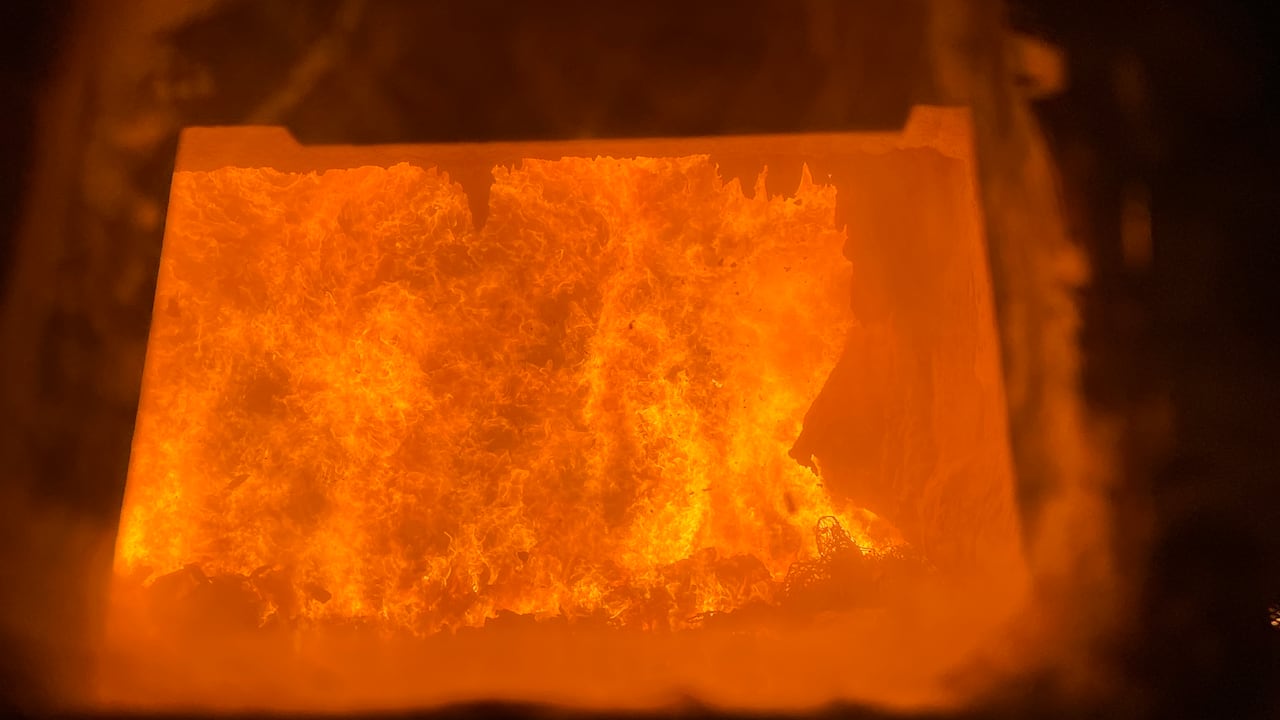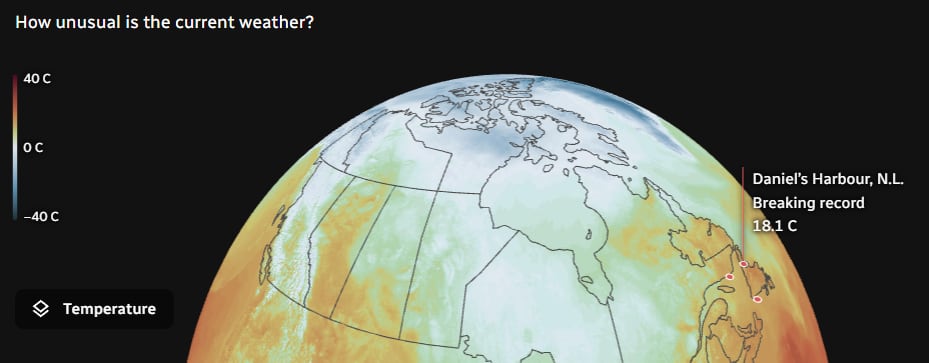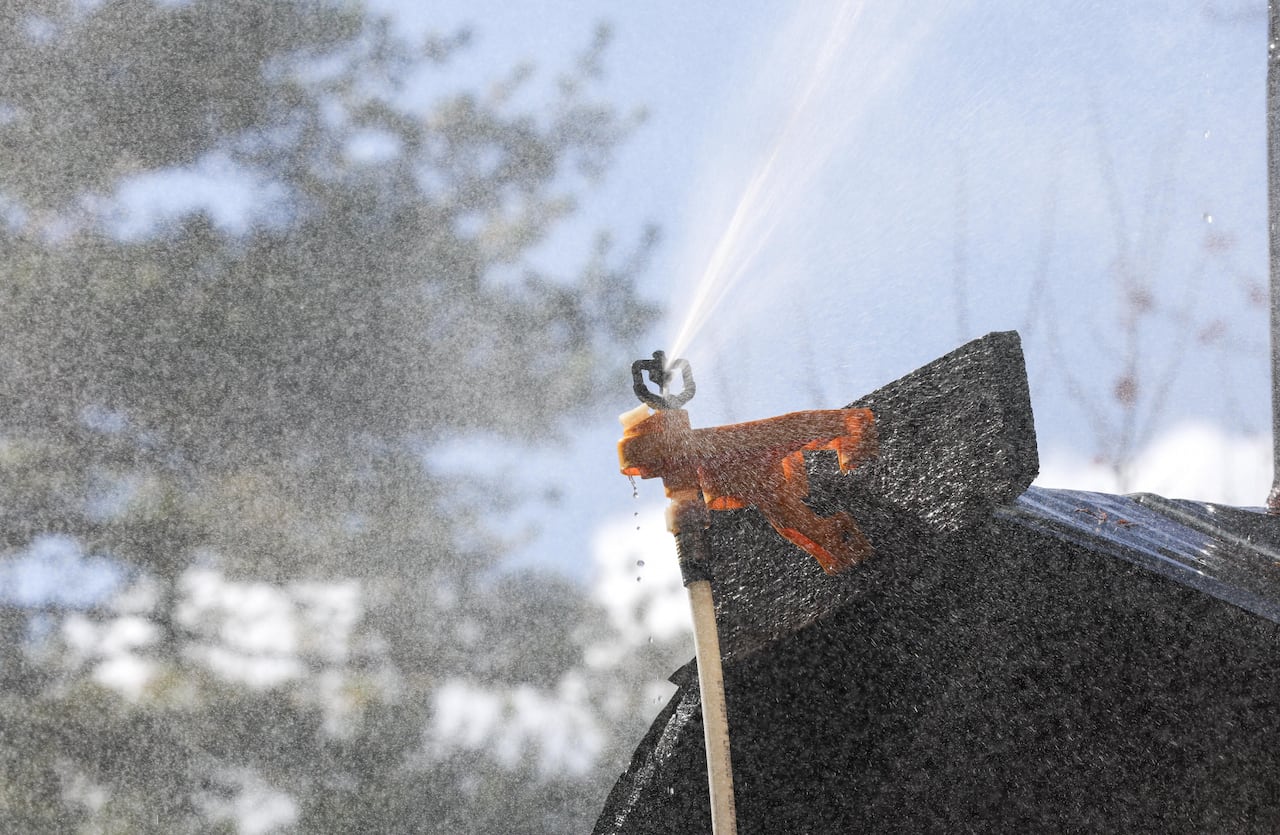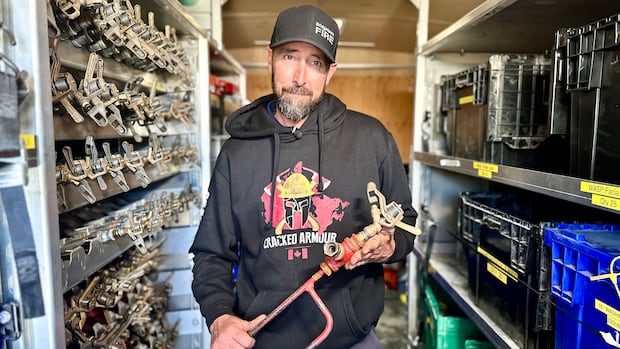Welcome to our weekly newsletter where we highlight environmental trends and solutions that are moving us to a more sustainable world.
Hi, it’s Inayat! Last week, I saw an Instagram post about Toronto considering waste incineration, and it got me wondering if that was a good idea. It turns out there’s no pretty solution when it comes to dumping our garbage.
This week:
- Why is Toronto considering burning its waste?
- The Big Picture: Big data, big water use
- Sprinklers save homes from wildfires
Why is Toronto considering burning its waste?
In most of North America, the solution to getting rid of garbage is simple: dump it in a landfill. Over the decades, landfills have evolved into modern engineered structures that are built to prevent leaks, smells and air pollution.
But despite the advances, nobody wants a garbage dump in their backyard, as the City of Toronto is finding out while it faces a looming disposal crisis. The city is set to run out of space at its main landfill site, the Green Lane Landfill near London, Ont., by 2035, so it asked 378 municipalities within a 500-kilometre radius of Toronto if they would be open to accepting waste or hosting a new landfill.
Not one said yes.
Extending the life of the present landfill is also a problem, because Indigenous communities near the site don’t support expanding it and say they already suffer from the pollution and smells coming from the site.
So the city is considering incineration, or energy-from-waste — burning the waste and producing some energy from it. It included incineration in its recent public survey seeking advice and opinions from residents on what to do with the waste. And Torontonians don’t have to look far to see examples: there are waste incinerators in the region in Brampton, run by a private company, and in Durham region, run by the regional municipal government.
The Durham facility can handle 140,000 tonnes of waste annually, and has a long-term plan to expand to 250,000 tonnes.
How do emissions stack up?
Whether a landfill or an energy-from-waste facility is better from an emissions standpoint is disputed — and may come down to the specifics of a facility’s technology.
Reworld, the company that built the Durham facility, says it is better on greenhouse gas emissions than landfills, which emit carbon in the form of methane from decomposing waste. Their analysis is based on the estimated amount of energy generated by the facility and the amount of metals it recovers from the waste.
Jyoti Agarwal, director of environmental programs at Reworld, said the industry has been “plagued with the sort of ‘your grandfather’s incinerator’ perception with the public. But that technology has really moved on.”

However, the climate claims of incinerators are disputed. Environmental groups argue that modern landfills have equipment to capture the methane that comes off decomposing waste, making them a better option than burning garbage.
“We’re concerned that the greenwashing has really distracted people from the real solutions — which are reducing waste in the first place,” said Emily Alfred, waste campaigner for the Toronto Environmental Alliance.
Previous peer-reviewed research in the U.S. also indicates that landfills that capture methane efficiently could have lower emissions than incineration.
But Joe Lyng, general manager of Emerald Energy from Waste, the Brampton incineration facility, says those ideal conditions don’t always happen, and methane collection rates can vary widely depending on how well-designed the landfill is.
“Energy-from-waste has a meter at the end of our stack that measures every pound of carbon that comes out. Landfill greenhouse gas emissions are all based on computer models that are only as good as the science behind them,” he said.
The Brampton facility is currently planning to build a large expansion that would take it from 182,000 tonnes to 900,000 tonnes of waste annually.
Air quality
Greenhouse gases aren’t the only issue under debate. Peel Public Health, the agency serving the region the Emerald facility is in, has raised concerns the incinerator’s expansion could have adverse heart and lung health impacts. Health officials warned that the expanded facility could reach the limit, or exceed limits, of certain toxic pollutants, putting local residents at risk.
Put alongside the various climate and environmental impacts of landfills, there doesn’t seem to be an easy answer to the region’s waste conundrum. Alfred called these “false choices” that don’t get to the real solution of cutting down on waste in the first place. She said that rather than spending millions on expensive solutions like incineration, the province should first try to cut down on the amount of garbage itself.
That includes ramping up producer responsibility programs to make manufacturers responsible for the waste from their products and improving diversion rates for organic and recyclable waste so it doesn’t end up in landfills.
“It is a wake-up call. It’s a reckoning,” she said of the looming landfill deadline. “Do we want to burn this stuff and inhale it?”
— Inayat Singh

Old issues of What on Earth? are here. The CBC News climate page is here.
Check out our podcast and radio show. In our newest episode: Work is underway to pump seawater onto ice in Nunavut as a way to thicken it in the face of climate change. The experiment is showing some promising results, but there are also concerns about its impact on ecosystems. Journalist Alec Luhn travelled onto the ice to see what was happening and to listen to local Indigenous elders about what the ice means to them. He also considers the moral hazard of trying to geoengineer a solution and whether it distracts from the real work needed to cut emissions.
What On Earth20:51Can we re-freeze the Arctic – and should we?
What On Earth drops new podcast episodes every Wednesday and Saturday. You can find them on your favourite podcast app or on demand at CBC Listen. The radio show airs Sundays at 11 a.m., 11:30 a.m. in Newfoundland and Labrador.
Check the CBC News Climate Dashboard for live updates on record-breaking weather across the country. Set your location for information on air quality and to find out how today’s temperatures compare to historical trends.

Reader feedback
Last week, we wrote about the debate over whether or not we should be raking our leaves.
Stuart Clarke from Whitehorse brought up a very good point about the debate.
“Those of us living in the boreal forest region are concerned about the danger of ember showers from nearby wildfires. Dry leaves make perfect kindling for these embers to start a fire near our houses. In fact, ember showers are the main reason for house fires in a wildfire situation. For us, it is very important to remove any ‘fine fuels’ from our yards, including dry leaves.”
Pat Dixon from Toronto is taking the natural approach: “We gradually eliminated our lawn, and let the leaves sit there. Tulips and many other flowering plants, bushes, etc., all seem to burst through in spring, year after year. One year out of curiosity, I did an experiment — raked leaves up into a corner and left them there, to see what would happen. Maybe a year later (if not less), it had turned into what looked like topsoil. That was exciting — I’ll bet any elementary school child would get a kick out of doing that. I’ve assumed the leaves nourish our garden year after year.”
Write us at [email protected] (and send photos there too!)

The Big Picture: Big data, big water use
Data centres are coming under increasing scrutiny for the amount of water their cooling systems consume. Though other cooling methods are available, water-based approaches are popular with data centre operators because they are more energy efficient. But they use huge amounts of potable water, usually supplied by municipal utilities. In warmer climates, large data centres consume more than a million litres of water per day. In some cities, such as Phoenix, data centres have contributed to water shortages that limit residential development.
The race to build data centres with AI capacity threatens to further strain water resources around the world. That’s because AI infrastructure requires thousands of densely packed high-performance chips, which generate more heat than conventional computer servers. That, in turn, means AI data centres require more water for cooling. It’s estimated Big Tech will spend more than $500 billion this year on AI infrastructure projects.
Read and watch more about the vast amount of water used by AI data centres from CBC Investigates.
— Jonathan Montpetit
Hot and bothered: Provocative ideas from around the web
- A U.S. company called Reflect Orbital is proposing to put mirrors in space to provide “sunlight as a service,” claiming solar farms could use the reflected sunlight after dark. But astronomers are concerned about how that could cause the further loss of our once-pristine night sky.

Sprinklers save homes from wildfires

A generator is buzzing in a grassy field at the operations site of the Lake George wildfire in Nova Scotia as a crew member spreads out countless lengths of hose to dry in the sun.
The lines have just been pulled from homes and infrastructure, where they were feeding hundreds of sprinklers with water that shot into the air and kept homes damp, saving them from approaching flames and falling embers.
With the Kings County wildfire under control, the equipment is being packed into trailers until the next time it’s needed.
This wildfire season saw the biggest operation in the province’s history to protect structures. The measures were so effective that the Department of Emergency Management is buying more structure protection units — the trailers that contain all the needed equipment, such as sprinklers, pumps and hoses.
“We’re investing heavily in increasing our numbers from one end of this province to the other,” said Dave Rockwood, the province’s fire and ground search and rescue co-ordinator, a new position with the Department of Emergency Management.
Sprinklers helped spare dozens of homes and infrastructure during both the Lake George and Long Lake wildfires, said Rockwood.
They work to protect structures by wetting surfaces to prevent ignition from embers and by cooling the environment to slow fire progression.

At Lake George, 600 sprinklers of various designs were employed. It took about five days to set up and weeks of labour to keep running.
“It’s been very time-consuming, but very effective,” said Rockwood.
Nova Scotia currently owns one structure protection unit. The province said it plans to buy additional units at $245,000 each, although it would not say exactly how many.
It noted it also has partnerships with fire departments across the province who have their own units, such as Halifax Regional Fire and Emergency and the Brooklyn Volunteer Fire Department.
During the Long Lake fire in Annapolis County, 88 homes were fitted with sprinklers, and 85 of those homes were saved, the province said.
“Three were unfortunately unable to be saved because of the topography around those homes, and other factors. Fuel types and fire types will differ every time, and will contribute to the outcome,” said provincial spokesperson Patricia Jreige in an email.
“Other things like the layout of the community and construction materials of structures also make a big difference in the outcome when using sprinklers.”
A total of 20 homes were lost. But Jason Burton’s was not one of them.
His house was outfitted with sprinklers and remained standing. Steps away, his garage burnt to the ground.
“I truly appreciate everything they did,” Burton said in a recent interview, becoming emotional. “I want to thank you so much.”
As two major wildfires raged in Nova Scotia this summer, hundreds of sprinklers were hard at work protecting homes and critical infrastructure. The operations were so effective that the province is buying more. Aly Thomson tells us more.
During the Lake George fire, sprinklers were also set up throughout the area to create a force field of water, said Rockwood.
“So around each community, we’d put sprinklers every 25 feet. The sprinklers shoot about 30 feet. So we’d get a crossover and we just created a wall of water around each of the little subdivisions,” Rockwood said.
Keeping the sprinklers running is a massive operation.
Crews have two options: if there’s a water source nearby, they can pump water from there to feed hose lines directly. If not, they have to bring in large portable tanks.
Rockwood said one portable water tank holds 2,500 gallons — roughly 10,000 litres — of water and will drain in 30 to 45 minutes.
That means engines have to run back and forth between a water source and the tank constantly throughout their shift, topping it up to keep the sprinklers running.
“During Long Lake, we moved millions and millions of gallons,” said Rockwood.
“We were able to locate smaller ponds, but in people’s yards, that kind of thing. But a lot of them were already empty. So then we still had to bring it up and it was taking 80 tankers just to fill some of these ponds so we’d have reliable water sources on site,” he said.
Rockwood noted sprinklers were not used during the devastating Halifax-area and Shelburne County wildfires in May 2023 because those fires were moving much too fast, which is typical fire behaviour early in the season.
The province said the new structure protection units will be purchased through the province’s regular procurement process.
— Aly Thomson
Thanks for reading. If you have questions, criticisms or story tips, please send them to [email protected].
What on Earth? comes straight to your inbox every Thursday.
Editors: Emily Chung and Hannah Hoag | Logo design: Sködt McNalty







